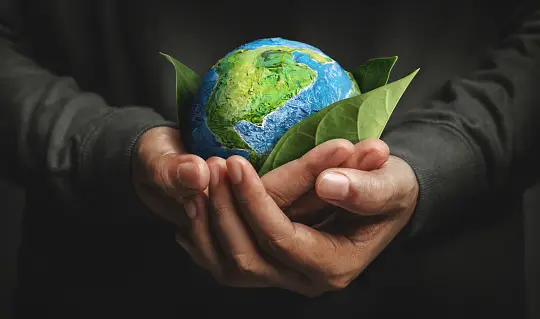By Thirumala Arohi, Senior Vice President and Head of Education, Training & Assessments, Infosys
In the last few decades, there is growing awareness about the dangers of climate change caused by the rising levels of greenhouse gases. As a result, enterprises are including sustainability best practices in their operations. Creating workplaces that meet sustainability goals can go a long way in achieving a carbon-neutral future.
Enterprises at large are contributing to workplace sustainability by ensuring eco-friendly campuses and buildings. But sustainability can be achieved at a much larger scale when every single contributor to a business’s ecosystem makes sustainability practices a way of life. This shift in the way we approach sustainability can be defined as workplace sustainability.
The three pillars of workforce sustainability include the organization, the business eco-system, and most importantly, its people.
Organizations use technology to meet their sustainability goals
Most if not all sustainability changes are driven by technology. For example, in Europe, steel and chemical industries are using smart technology to monitor their energy use and use the data to optimize their production processes. Innovative mobility solutions are being developed for cleaner modes of transport. At Infosys, we have switched over to electric buses for our employee transportation.
Summarizing the role of technology in sustainability, Glickman and Kavanaugh in their book,
` Practical Sustainability’ say, with the explosion of new digital technologies such as big data and machine learning, the scope to solve environmental problems becomes much larger. The book recommends a framework that focuses on building a regenerative future and a circular commerce. It recommends employing technology to understand and contextualize the world through data-driven insights and finally to ensure that the sustainability initiatives are focused on elevating the human experience.
Business Eco-System as a Sustainability Driver
Committed enterprises are actively practising sustainability by extending expectations to their eco-system of customers, vendors, and partners. To take Apple’s example again, it commits to be 100 percent carbon neutral for its supply chain and products by 2030.Technology enterprises such as Infosys have outlined sustainability best practices and tailored learning programs on sustainability for vendors and partners.
Workforce Integral to Sustainability
The central force in sustainability practices is people because technology is only a tool in the hands of people, and when the workforce uses it effectively it results in dramatic changes.
To ensure that workforce sustainability is not just a high-level vision, but a practical approach to business processes, the workforce requires to be trained and made aware of the need for sustainability. This is where the learning department plays a crucial role.
Why Learning & Development is Crucial to Sustainability
Sustainability should be an integral element of all training – whether it is related to technology skills, professional skills, or leadership development. Every leader in the organization must be trained to imbibe the value of practical sustainability in their daily work and people interaction. The learning department can create campaigns and act as a powerful influencer in driving behavioural change in employees to align better to sustainability practices. Leaders can be trained to act as change managers to lead the shift to new sustainability-centric processes and best practices.
People, be it employees, customers, suppliers, or business partners can play an influential role in making a shift from performance to fulfilment. A change from generic learning to personalized learning can go a long way in helping employees understand the various elements of a sustainable organization. Keeping pace with the work from anytime, anywhere model that the pandemic brought about, the function of learning also has moved beyond the physical classroom to anytime, anywhere hybrid learning which is helping reduce carbon emits.
The learning and development teams are investing in technologies and creating smart eco-systems, making sure that the learning offerings are tailored to each role. The training is to enable employees to spot those areas of improvement or change that they can bring in their jobs to align with the broader organizational goal for sustainability.
For example, a well-trained engineer will learn how to optimize and reduce the number of lines of code to reduce power wastage required to run longer processes. Operations teams could learn how to leverage or reuse existing assets rather than build new assets. Designers and developers could create sustainability solutions using AR, VR, and digital twins that reduces the use of scarce physical resources.
The learning and development function can also champion and implement knowledge management practices in an organization. We are doing it at Infosys by identifying internal best-practices and creating micro or nano learnings out of them. Creating a knowledge eco-system can encourage employees to share and learn from colleagues on new ways of being more eco-friendly.
Organizations must provide learning and development not just to employees but all the stakeholders who have a role to play that impacts the environment. At Infosys, we have created the Infosys Wingspan, which is a versatile cloud-based learning solution that helps us provide training to our employees, suppliers, and partners. This helps spread the sustainability best practices among our clients too.
Digital transformation has enabled democratization of technology, where employees have access to IT systems to create new solutions and drive values. Their actions influence the environment. With learning and development, employees can be more aware of their responsibilities towards the organization and the world at large.
In the future, it isn’t the largest or the fastest organizations that will succeed, it will be those who are continuously adapting to change that will be able to thrive and contribute to a sustainable world.

